Transcription of Degrees of Freedom and Model Search - CMU Statistics
1 Degrees of Freedom and Model SearchRyan J. TibshiraniAbstractDegrees of Freedom is a fundamental concept in statistical modeling, as it provides a quan-titative description of the amount of fitting performed by a given procedure. But, despite thisfundamental role in Statistics , its behavior is not completely well-understood, even in somewhatbasic settings. For example, it may seem intuitively obvious that the best subset selection fitwith subset sizekhas Degrees of Freedom larger thank, but this has not been formally verified,nor has is been precisely studied. At large, the current paper is motivated by this problem, andwe derive an exact expression for the Degrees of Freedom of best subset selection in a restrictedsetting (orthogonal predictor variables). Along the way, we develop a concept that we name Search Degrees of Freedom ; intuitively, for adaptive regression procedures that perform vari-able selection, this is a part of the (total) Degrees of Freedom that we attribute entirely to themodel selection mechanism.
2 Finally, we establish a modest extension of Stein s formula to coverdiscontinuous functions, and discuss its potential role in Degrees of Freedom and Search degreesof Freedom : Degrees of Freedom , Model Search , lasso, best subset selection, Stein s formula1 IntroductionSuppose that we are given observationsy Rnfrom the modely= + ,withE( ) = 0,Cov( ) = 2I,(1)where Rnis some fixed, true mean parameter of interest, and Rnare uncorrelated errors,with zero mean and common marginal variance 2>0. For a functionf:Rn Rn, thought of asa procedure for producing fitted values, =f(y), recall that thedegrees of freedomoffis definedas (Efron 1986, Hastie & Tibshirani 1990):df(f) =1 2n i=1 Cov(fi(y),yi).(2)Intuitively, the quantity df(f) reflects the effective number of parameters used byfin producingthe fitted output . Consider linear regression, for example, wheref(y) is the least squares fit ofyonto predictor variablesx1.
3 Xp Rn: for this proceduref, our intuition gives the right answer, asits Degrees of Freedom is simplyp, the number of estimated regression , , leadsto an unbiased estimate of the risk of the linear regression fit, via Mallows sCpcriterion (Mallows1973).In general, characterizations of Degrees of Freedom are highly relevant for purposes like modelcomparisons and Model selection; see, , Efron (1986), Hastie & Tibshirani (1990), Tibshirani &Taylor (2012), and Section , for more motivation. Unfortunately, however, counting Degrees offreedom can become quite complicated for nonlinear, adaptive procedures. (By nonlinear, we meanfbeing nonlinear as a function ofy.) Even for many basic adaptive procedures, explicit answers are1 This is assuming linear independence ofx1, .. xp; in general, it is the dimension of span{x1, .. xp}.1not known. A good example is best subset selection, in which, for a fixed integerk, we regress onthe subset ofx1.
4 Xpof size at mostkgiving the best linear fit ofy(as measured by the residualsum of squares). Is the Degrees of Freedom here larger thank? It seems that the answer should be yes , because even though there arekcoefficients in the final linear Model , the variables in thismodel were chosen adaptively (based on the data). And if the answer is indeed yes , then thenatural follow-up question is: how much larger is it? That is, how many effective parameters doesit cost to Search through the space of candidate models? The goal of this paper is to investigatethese questions, and related A motivating exampleWe begin by raising an interesting point: though it seems certain that a procedure like best subsetselection would suffer an inflation of Degrees of Freedom , not all adaptive regression procedures particular, thelasso(Tibshirani 1996, Chen et al. 1998), which also performs variable selection inthe linear Model setting, presents a very different story in terms of its Degrees of Freedom .
5 Stackingthe predictor variablesx1,..xpalong the columns of a matrixX Rn p, the lasso estimate can beexpressed as: lasso= argmin Rp12 y X 22+ 1,(3)where 0 is a tuning parameter, controlling the level of sparsity. Though not strictly necessaryfor our discussion, we assume for simplicity thatXhas columns in general position, which ensuresuniqueness of the lasso solution lasso(see, , Tibshirani (2013)). We will writeAlasso {1,..p}to denote the indices of nonzero coefficients in lasso, called the support or active set of lasso, alsoexpressed asAlasso= supp( lasso).The lasso admits a simple formula for its Degrees of 1(Zou et al. 2007, Tibshirani & Taylor 2012).Provided that the variables (columns) inXare in general position, the lasso fit lasso=X lassohas Degrees of freedomdf( lasso) =E|Alasso|,where|Alasso|is the size of the lasso active setAlasso= supp( lasso). The above expectation assumesthatXand are fixed, and is taken over the sampling distributiony N( , 2I).
6 In other words, the Degrees of Freedom of the lasso fit is the number of selected variables, inexpectation. This is somewhat remarkable because, as with subset selection, the lasso uses the datato choose which variables to put in the Model . So how can its Degrees of Freedom be equal to the(average) number of selected variables, and not more? The key realization is that the lasso shrinksthe coefficients of these variables towards zero, instead of perfoming a full least squares fit. Thisshrinkage is due to the`1penalty that appears in (3). Amazingly, the surplus from adaptivelybuilding the Model is exactly accounted for by the deficit from shrinking the coefficients, so thataltogether (in expectation), the Degrees of Freedom is simply the number of variables in the analogous result holds for an entirely arbitrary predictor matrixX(not necessarilyhaving columns in general position), see Tibshirani & Taylor (2012); analogous results also existfor the generalized lasso problem (special cases of which are the fused lasso and trend filtering), seeTibshirani & Taylor (2011, 2012).
7 Figure 1 shows an empirical comparison between the Degrees of Freedom of the lasso and bestsubset selection fits, for a simple example withn= 20,p= 10. The predictor variables were setupto have a block correlation structure, in that variables 1 through 4 had high pairwise correlation(between and ), variables 5 through 10 also had high pairwise correlation (between ), and the two blocks were uncorrelated with each other. The outcomeywas drawn by adding202468100246810 Average # of nonzero coefficientsDegrees of freedomlllllllllllLassoSubset selectionFigure 1:A simulated regression example withn= 20,p= 10. We drew 100 copies of the outcomeyfromthe same sparse regression setup, and fit the lasso and best subset selection estimates each time, across 10prespecified tuning parameter values. The plot shows the average number of selected variables by the lasso (inblue) and best subset selection (in red), across the tuning parameter values, versus their (estimated) degreesof Freedom .
8 The lasso Degrees of Freedom lines up with the number of selected variables, but the same is nottrue for subset selection, with its Degrees of Freedom being relatively much normal noise toX , for some true coefficient vector , supported on the first blockof variables, and on one variable in the second block. We computed the lasso estimate in (3) over10 values of the tuning parameter , as well as a best subset selection estimate subset argmin Rp12 y X 22+ 0,(4)over its own 10 values of . Recall that 0= pj=11{ j6= 0}. We repeated this process 100times, , drew 100 copies ofyfrom the described regression Model , keepingXand fixed, andeach time computed fitted values from the lasso and best subset selection across the same 10 valuesof the tuning parameter. For each method and value of , we then:1. computed the average number of nonzero coefficients over the 100 trials;2. evaluated the covariance in (2) empirically across the 100 trials, as an (unbiased) estimate ofthe Degrees of 1 plots the first quantity versus the second quantity, with the lasso in blue and best subsetselection in red.
9 As prescribed by Theorem 1, the (estimated) Degrees of Freedom of the lasso fit isclosely aligned with the average number of nonzero coefficients in its estimate. But subset selectiondoes not follow the same trend; its (estimated) Degrees of Freedom is much larger than its deliverednumber of nonzero coefficients. For example, when is tuned so that the subset selection estimatehas a little less than 3 nonzero coefficients on average, the fit uses about 9 Degrees of does this happen? Again, this can be intuitively explained by shrinkage this time, a lackthereof. If we denote the support of a best subset selection solution byAsubset= supp( subset), and3abbreviateA=Asubset, then it is not hard to see that subsetA= (XTAXA) 1 XTAy, , the active coefficients are given by least squares on the active variablesXA(the submatrix ofXformed by taking the columns inA). Therefore, like the lasso, best subset selection chooses anactive set of variables adaptively, but unlike the lasso, it fits their coefficients without shrinkage,using ordinary least squares.
10 It pays for the surplus of covariance from the adaptive Model Search ,as well as the usual amount from least squares estimation, resulting in a total Degrees of freedommuch larger than|A|(or rather,E|A|).A clarifying note: simulations along the lines of that in Figure 1 can be found throughout theliterature and we do not mean to claim originality here ( , see Figure 4 of Tibshirani & Knight(1999) for an early example, and Figure 2 of Janson et al. (2013) for a recent example). Thissimulation is instead simply meant to motivate the work that follows, as an aim of this paper is toexamine the observed phenomenon in Figure 1 more Degrees of Freedom and optimismDegrees of Freedom is closely connected to the concept of optimism, and so alternatively, we couldhave motivated the study of the covariance term on the right-hand side in (2) from the perspectiveof the optimism, rather than the complexity, of a fitting procedure.
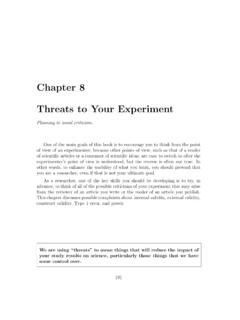
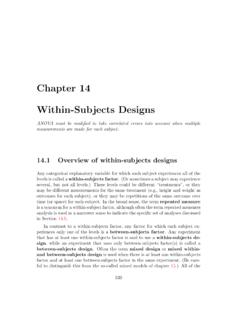
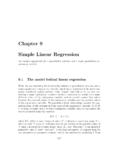
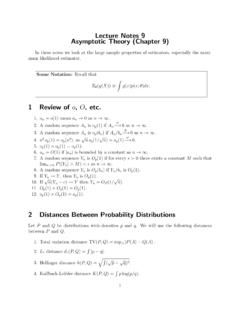
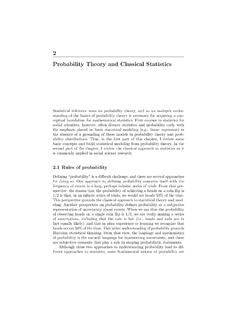
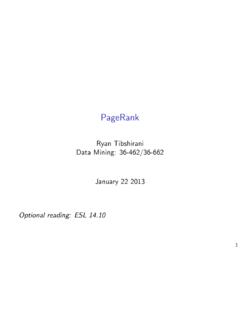
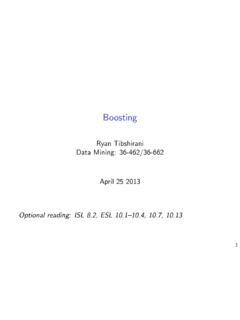
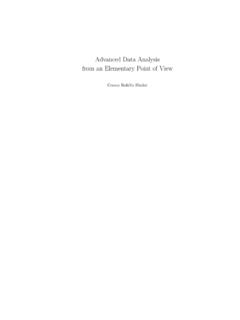
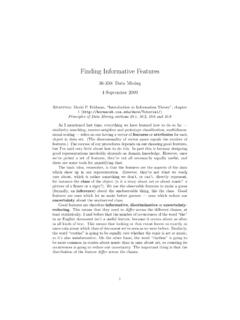
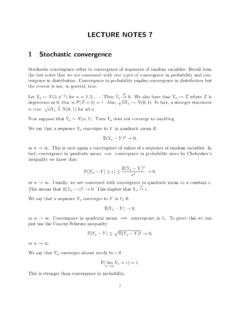

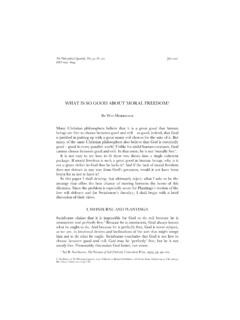
![Freedom [D, 143 bpm, 4/4] - Clover Sites](/cache/preview/7/b/3/2/e/a/0/2/thumb-7b32ea021db8eff043c12a0e79a94712.jpg)






